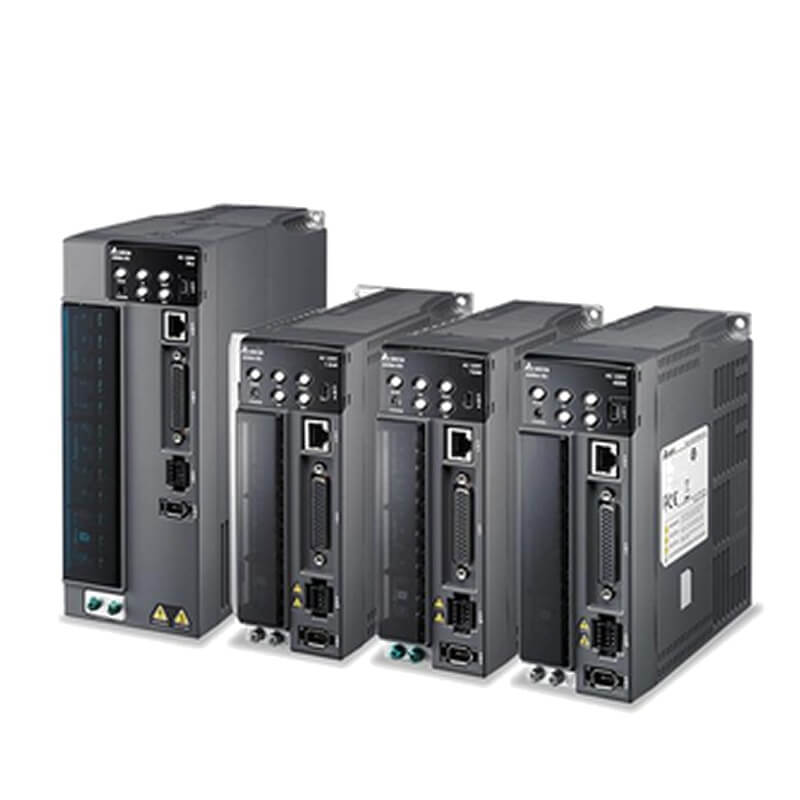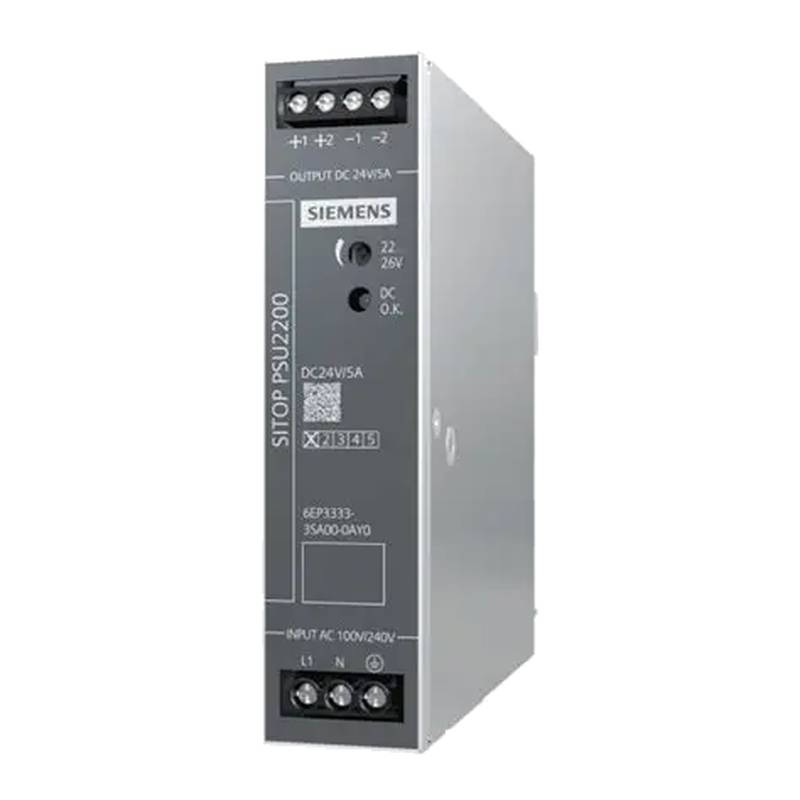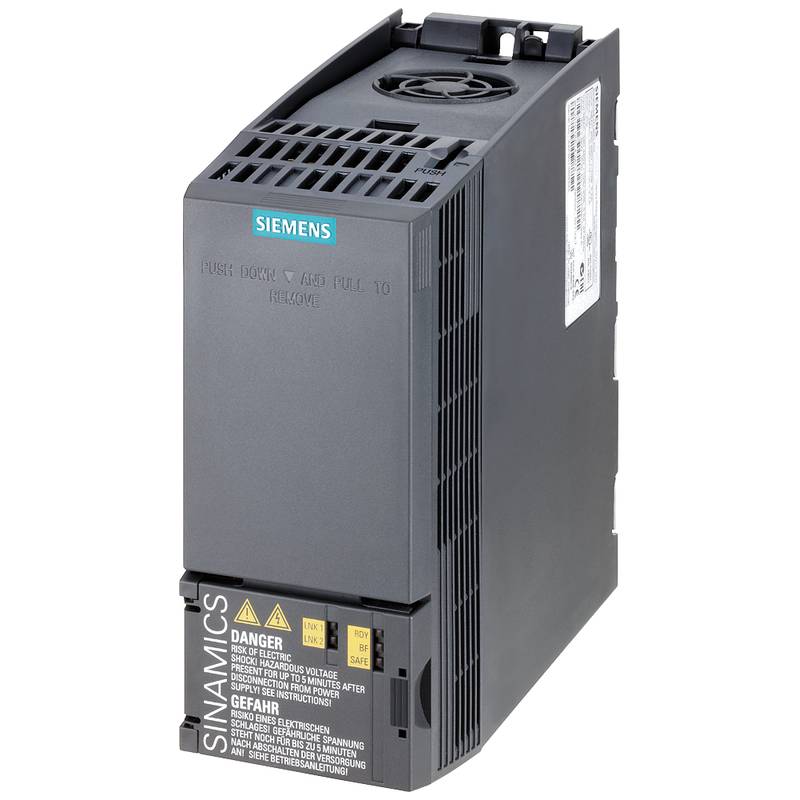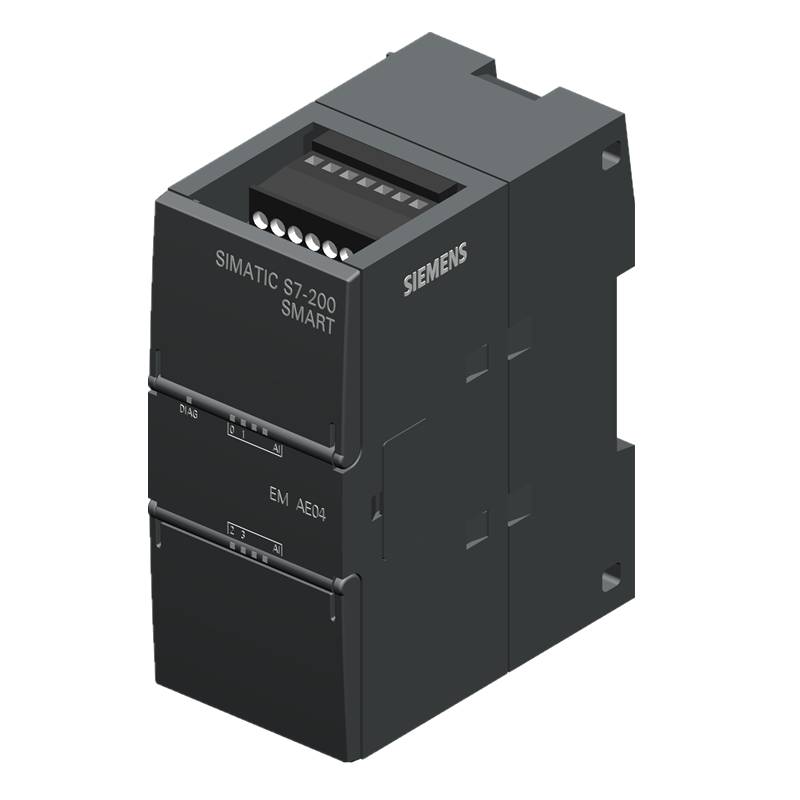
The Siemens 5SU9156-7KK32 RCCB is a highly specialized residual current circuit breaker designed for robust earth leakage protection in air conditioning systems. This 32A, 10mA, 1P+N device offers superior safety and operational reliability, crucial for protecting sensitive HVAC equipment and preventing electrical hazards. Its core advantage lies in its rapid detection and interruption of fault currents, safeguarding both personnel and machinery from the damaging effects of earth leakage.
Product Specifications
| Parameter | Specification |
| :--------------------- | :------------------------------- |
| Product Type | Residual Current Circuit Breaker |
| Model Number | 5SU9156-7KK32 |
| Rated Current (In) | 32A |
| Rated Residual Current | 10mA |
| Poles | 1P+N (1 Pole + Neutral) |
| Breaking Capacity (Icn)| 6 kA |
| Tripping Characteristic| Type C |
| Voltage Rating | 230/400V AC |
| Frequency | 50/60 Hz |
| Terminal Type | Screw Terminals |
| Mounting | DIN Rail |
| Protection Class | IP20 |
| Operating Temperature | -25°C to +45°C |
Core Features & Market Positioning
The Siemens 5SU9156-7KK32 distinguishes itself through its precision tripping at 10mA, an ideal sensitivity for preventing electric shock in environments with air conditioners where reliable personnel protection is paramount. Its Type C tripping characteristic ensures it can handle moderate inrush currents typical of compressor startup without nuisance tripping, a common issue with less sophisticated protection devices. This makes the 5SU9156-7KK32 a preferred choice for HVAC installations demanding both safety and operational stability, positioning it as a premium solution in the industrial and commercial electrical protection market.
Key Application Scenarios
This RCCB is specifically engineered for the demanding environment of air conditioning systems, providing essential earth leakage protection for single-phase and neutral circuits. Its application extends to protecting the power supply for split systems, central air units, and other HVAC equipment susceptible to insulation degradation or wiring faults. In commercial settings such as offices, data centers, and retail spaces, where air conditioning is critical, the 5SU9156-7KK32 ensures continuous operation while maintaining the highest safety standards for occupants and equipment alike.
Practical System Integration Guidance
Integrating the Siemens 5SU9156-7KK32 into an air conditioning system requires careful adherence to electrical codes and best practices. Ensure the RCCB is installed on a dedicated circuit that supplies the air conditioning unit. The line (incoming power) and load (to the AC unit) terminals must be correctly identified and connected; typically, incoming power connects to the top terminals and the load to the bottom. A proper earth connection to the AC unit's chassis is mandatory for the RCCB's protective function to be effective.
For a standard 230V single-phase AC unit, connect the live conductor to the 'L' terminal and the neutral conductor to the 'N' terminal on the RCCB. The earth wire from the AC unit should be connected to the grounding busbar, which is then bonded to the main earth system. Before energizing, perform a test by pressing the 'T' (Test) button on the RCCB; this should immediately trip the device, indicating correct installation and functionality.
It is crucial to ensure that the overall load current does not exceed the 32A rating of the 5SU9156-7KK32. Verify the current draw of the air conditioning unit, including any startup surge, to confirm compatibility. The RCCB should be installed in an accessible location for periodic testing and potential manual reset, typically within a main electrical panel or a sub-panel dedicated to HVAC equipment.
Operation and Risk Mitigation
The primary function of the Siemens 5SU9156-7KK32 is to detect imbalances between the live and neutral conductors, indicating a potential leakage current to earth. If this leakage current exceeds 10mA, the RCCB will rapidly trip, interrupting the power supply and preventing electric shock or fire hazards. Regular testing using the integrated test button is vital to ensure the device remains operational.
Should the RCCB trip unexpectedly, first ascertain the cause by inspecting the air conditioning unit for obvious faults or damage. If the tripping persists after a reset, it indicates a persistent earth leakage issue that requires professional diagnosis and repair of the AC unit or its associated wiring. Never bypass or disable the RCCB, as this would negate its crucial safety function.
The 10mA sensitivity is specifically chosen for enhanced personal protection, especially in areas where contact with earthed surfaces is possible. While higher sensitivity RCCBs exist, 10mA offers an effective balance between protection against minor leakages and avoiding excessive nuisance tripping in a typical air conditioning application. This ensures a safe operating environment without compromising the reliability of the climate control system.
Scalability & Long-Term Value
The Siemens 5SU9156-7KK32 RCCB is designed for straightforward integration into existing electrical distribution systems, particularly those utilizing standard DIN rail mounting. Its compatibility with the broader Siemens electrical components portfolio ensures seamless upgrades or expansions of protective circuits. For facilities aiming for enhanced monitoring or predictive maintenance, this RCCB can be part of a larger smart electrical infrastructure.
While this specific model is optimized for a single circuit, its modular design allows for the installation of multiple units to protect various air conditioning zones or individual units independently. This approach enhances system resilience, as a fault in one circuit does not affect others. This modularity provides a scalable protection strategy aligned with the growth or modification of building HVAC systems.
In the context of evolving building automation and IIoT integration, the 5SU9156-7KK32 provides foundational electrical safety. While not inherently a smart device, its reliable operation contributes to the overall stability of systems that might be monitored remotely. Ensuring robust protection at the component level is a prerequisite for the successful implementation of advanced digital solutions in industrial and commercial facilities.
Frequently Asked Questions (FAQs)
Q1: What is the primary purpose of the Siemens 5SU9156-7KK32 RCCB for an air conditioner?
This RCCB provides essential earth leakage protection. It guards against electrical shocks and fires caused by faults in the AC unit's wiring or components. The 10mA sensitivity is ideal for personal safety.
It detects small imbalances in current. If current leaks to earth, it trips quickly. This protects people and prevents equipment damage from faults.
The device ensures safe operation of air conditioning systems. It meets strict safety standards for electrical installations in residential and commercial buildings.
Q2: Can this RCCB be used for any type of air conditioner?
Yes, it's designed for single-phase air conditioners. It is suitable for residential, commercial, and light industrial HVAC applications.
The 32A rating should match the AC unit's power requirements. Always verify the total load current, including surge.
Ensure the AC unit's wiring is compatible with a 1P+N configuration. Consult the AC unit's manual for electrical specifications.
Q3: What does "10mA" sensitivity mean for this RCCB?
It signifies the minimum earth leakage current that will cause the device to trip. A 10mA threshold offers enhanced protection against electric shock.
This sensitivity is suitable for protecting people in environments where AC units are installed. It detects even minor faults before they become dangerous.
Compared to higher ratings like 30mA, 10mA provides a more stringent safety level for direct contact scenarios. It's critical for sensitive applications.
Q4: How do I install the Siemens 5SU9156-7KK32 RCCB?
Mount it securely on a standard DIN rail in your electrical panel. Connect the incoming power (line and neutral) to the top terminals.
Connect the air conditioner's power supply (line and neutral) to the bottom terminals. Ensure all connections are tight and properly insulated.
Always follow local electrical codes and manufacturer instructions. Test the RCCB after installation using the built-in test button.
Q5: What is a "Type C" tripping characteristic?
Type C indicates how the RCCB reacts to overcurrents caused by motor startups. It allows for higher inrush currents without tripping unnecessarily.
This characteristic is suitable for inductive loads like air conditioner compressors. It prevents nuisance tripping during normal system operation.
It offers a balance between motor starting requirements and earth fault protection. Standard circuit breakers also often use Type C for similar loads.
Q6: What should I do if the RCCB trips frequently?
First, check the air conditioner for any visible damage or operational issues. Reset the RCCB after ensuring the AC unit is off.
If it trips again, there is likely a persistent earth leakage fault in the AC unit. This requires professional diagnosis and repair by an HVAC technician.
Do not repeatedly reset a tripping RCCB without investigating the cause. This could indicate a serious electrical problem that poses a safety risk.
Q7: How do I test the functionality of the 5SU9156-7KK32?
Locate the test button, usually marked with a 'T', on the front of the RCCB. Ensure the connected air conditioner is turned off.
Press the test button firmly. The RCCB should trip, indicating that the internal mechanism and tripping coil are functioning correctly.
If it does not trip, the RCCB may be faulty and needs replacement. Regular testing (e.g., monthly) is recommended for safety assurance.
Q8: Is this RCCB suitable for outdoor air conditioner units?
The RCCB itself has an IP20 rating, meaning it's protected against solid objects larger than 12.5mm. It is not designed for direct exposure to weather elements.
It should be installed in a suitable enclosure, such as an electrical panel or junction box, that protects it from moisture, dust, and extreme temperatures.
Ensure the enclosure provides adequate ventilation and protection against environmental factors affecting the AC unit's power supply.
Q9: What is the breaking capacity (Icn) of this RCCB?
The Siemens 5SU9156-7KK32 has a breaking capacity of 6 kA. This refers to the maximum fault current it can safely interrupt without being damaged.
This rating is sufficient for most residential and commercial electrical installations where air conditioning units are typically found. It ensures protection against severe short circuits.
Ensure that the upstream protective devices (like the main circuit breaker) are coordinated with this breaking capacity. This ensures selective protection.
Q10: How does this RCCB integrate with smart home or IIoT systems?
While this specific RCCB is a traditional safety device, its reliable operation supports smart systems. It provides foundational protection for connected AC units.
For full IIoT integration, consider smart circuit breakers or monitoring modules that can provide real-time data. This RCCB ensures the circuit's integrity for such systems.
The stable power delivery, ensured by this RCCB, is crucial for the consistent performance of sophisticated building management systems.
























